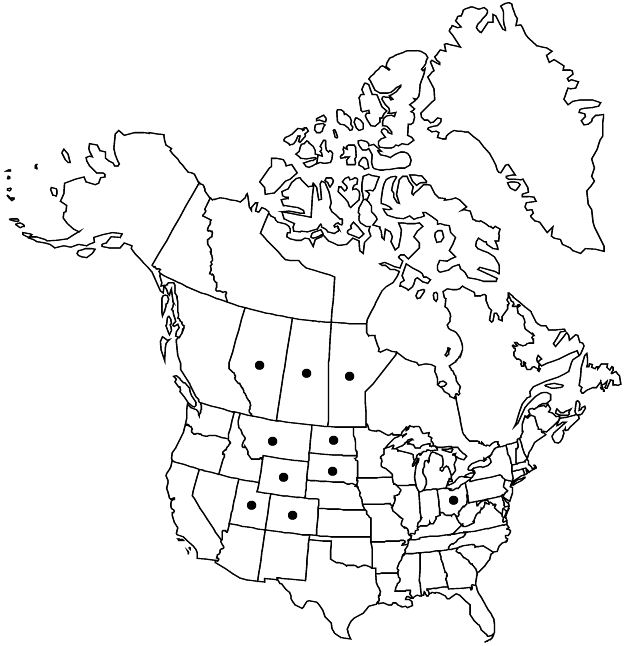Difference between revisions of "Potentilla concinna var. divisa"
Bull. Torrey Bot. Club 23: 431. 1896.
FNA>Volume Importer |
FNA>Volume Importer |
(No difference)
| |
Revision as of 20:36, 24 September 2019
Stems 0.2–1(–1.5) dm, lengths (1/2–)1–2 times basal leaves. Basal leaves palmate to subpalmate; leaflets on tip or to distal 1/4 of leaf axis, ± overlapping, proximal pairs sometimes separated from others by 1–3 mm of leaf axis; distal (1/2–)3/4 to entire length of central leaflets incised 1/2–3/4+ to midvein, teeth 3–5(–6) per side, 2–6 mm. Inflorescences (1–)2–6-flowered. Petals 5–8 mm. Achenes 2–2.5 mm.
Phenology: Flowering summer.
Habitat: High prairies, rocky slopes and ridges, gravelly foothills, open pine woodlands, often on limestone
Elevation: 600–3300 m
Distribution

Alta., Man., Sask., Colo., Mont., N.Dak., Ohio, S.Dak., Utah, Wyo.
Discussion
Variety divisa is the primary phase of the species in the northwestern prairies, Black Hills, and Rocky Mountain foothills. Plants differ from the typical variety in having more deeply toothed leaflets on average, as well as somewhat longer stems in relation to leaves, silkier vestiture, and occasional subpalmate leaves (possibly intergrading with Potentilla macounii). Also included in var. divisa are plants with deeply toothed leaflets from comparatively low elevations in northwestern Colorado, northeastern Utah, and Wyoming. These populations, which tend to have sparser, shaggier vestiture, were included by S. L. Welsh et al. (1993) in var. modesta (Rydberg) S. L. Welsh & B. C. Johnston (misapplied), along with some palmate-leaved collections of var. proxima. An anomalous collection from Stark County, Ohio (T. Davis 876, MO), which is exceptionally silky, is presumably introduced.
For the nomenclatural relation between var. divisa and Potentilla nivea var. dissecta S. Watson, see B. Ertter (2008).
Selected References
None.